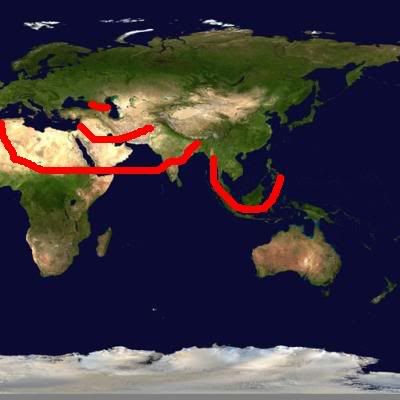One of the several paper presentations I saw at the Association of American Geographers' convention in Chicago was Examining the Geo-Political Development of Extremism in Chechnya after the fall of the Soviet Union by Mary Swalligan of Kent State University.
Ms. Swalligan gave a general overview of developments and world influences in Chechnya after the First and Second Chechen War. Also discussed was how
In the period between 1995 and 1999 was one of change. Wahhabists from
The second war broke out after Islamists arose against the Russian-backed government. The attack on a theater, where Chechnya terrorists dressed like Islamists and waved Arabic flags, was a sign of increased influence of Islamists in the area. The war continues today in low intensity but constantly fought battles.
The second part of the paper was dedicated to
I saw a problem with paper at the end. Ms. Swalligan believed in order to win in
As for the Arc of Instability I have an interesting theory. I purpose four Arcs. One by Chechnya, one in the Mideast from Saudi Arabia and Syria to Pakistan, one along the edge of the Sahara Desert to Bangladesh, and the final one from the Thailand, to the Philippines, to Indonesia. I call these the Arcs of Instability. Not too original but it works.
The middle arc (the
The northern arc can be handled by
The southern arc has to be an international effort. Military operations can be minimal in this area. Foreign investment, globalization, and other cooperative efforts can kill the weed of Islamistism before it blooms.
The eastern arc is the least pressing arc. Islamists actions are still low level (attacks on churches, kidnapping, and alike). By pressing the popular culture to reject these actions, and globalized investments can prevent anything serious. Military action against these thugs should be stepped up with idea of quick victory.
To win we must take on these arcs individually and separately.
Category: Geopolitics

No comments:
Post a Comment